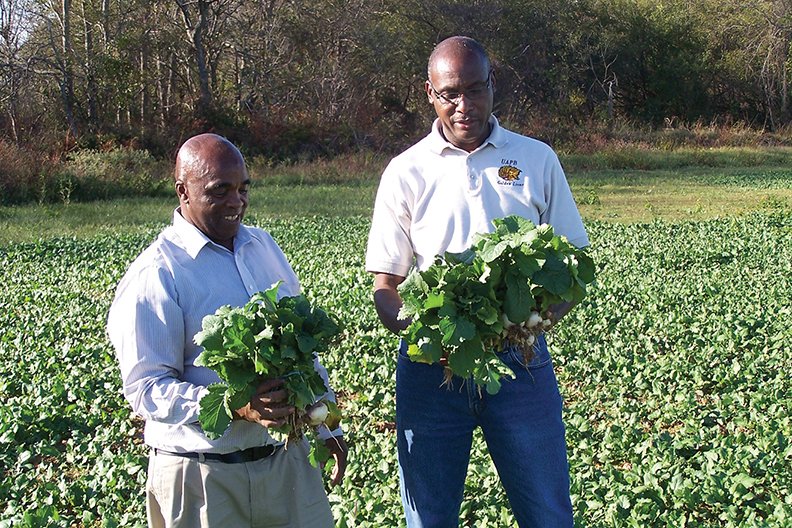PINE BLUFF -- Whether cooked or eaten raw in a salad, most leafy greens are excellent sources of fiber and vitamins A and C, Shaun Francis, Extension horticulture specialist for the University of Arkansas at Pine Bluff, said. Greens also happen to be the vegetable of choice to "feed" your garden.
"Not only are greens good for human health, but they can also help ensure the soil health in a garden throughout the fall and winter," he said. "When turned under in the fall, most greens replenish the organic matter in your soil and enhance earthworm and microbial activity close to the soil's surface."
As cool weather vegetables, leafy greens grow best and are the tastiest when planted in the late summer to early fall in south Arkansas, Francis said.
Most greens grow quickly on sandy loam soils with an optimum pH of 6.8, making them ideal for growing in a variety of spaces, he said. In addition to planting greens in a garden, they can be spot-planted in flower beds, along walkways and driveways and even in containers. In the case of lingering high temperatures, greens can be planted in shady areas, including beside an okra or corn patch, along the side of a shed or under pole beans.
Francis said leafy greens popular in Arkansas home gardens include spinach, collards, kale, chard, endive, celery, mustard, lettuce and Malabar and New Zealand spinach.
Collards, chard and Malabar and New Zealand spinach are productive during the warm late summer months with moderate humidity, Francis said. When grown at the right time, gardeners can prevent the bitter taste associated with these plants that results from premature flowering and stalk formation.
"Celery, kale, spinach and lettuce are best when grown at temperatures between 55 and 65 degrees," he said. "A light touch of frost makes each of these plants tasty and tender."
When planting greens, gardeners should sprinkle seeds on a wide row and cover with a half inch of soil. After germination, the greens should be thinned to allow 2 to 4 inches between each plant. New England spinach requires 8 to 10 inches between the plants.
"Adequate plant space is good insurance against disease outbreaks," Francis said. "Wider rows allow for good air circulation so plants can dry off after rain or watering. Light watering is necessary for greens because their roots are anchored within the first few inches of soil."
To harvest most greens -- including chard, endive, lettuce, mustard and spinach -- cut them to only 1 inch above the soil's surface, he said. This will allow the plants to quickly put on growth for another harvest.
When harvesting celery, collards, kale and Malabar and New Zealand spinach, gardeners should pick the outside leaves or branches, making sure to never cut the main stalk.
"Shortly before planting greens, gardeners should apply composted manure or two pounds of 5-10-10 commercial fertilizer per 100 square feet to ensure nutrients are available to young plants," Francis said. "Ideally, chemical fertilizer should be mixed into the first 2 or 3 inches of soil since some seeds and plants are sensitive and can get burned when directly exposed to fertilizer."
Troublesome insects including leaf miners, cabbageworms and aphids can pose a challenge when growing greens as they feed on the sap within the plant leaves and stems. To control the invasion of small leaf miners, simply remove any infected plants during the harvest. Gardeners can also spray a simple mixture of dish soap and water to reduce aphid populations.
"Arkansans can continue to harvest and enjoy their greens at the dinner table through the fall months," Francis said. "After the final harvest, plowing or rototilling the remnants of these gardens helps ensure early and productive planting next season."
Will Hehemann is a writer/editor for the University of Arkansas at Pine Bluff School of Agriculture, Fisheries and Human Sciences.
Society on 11/10/2019